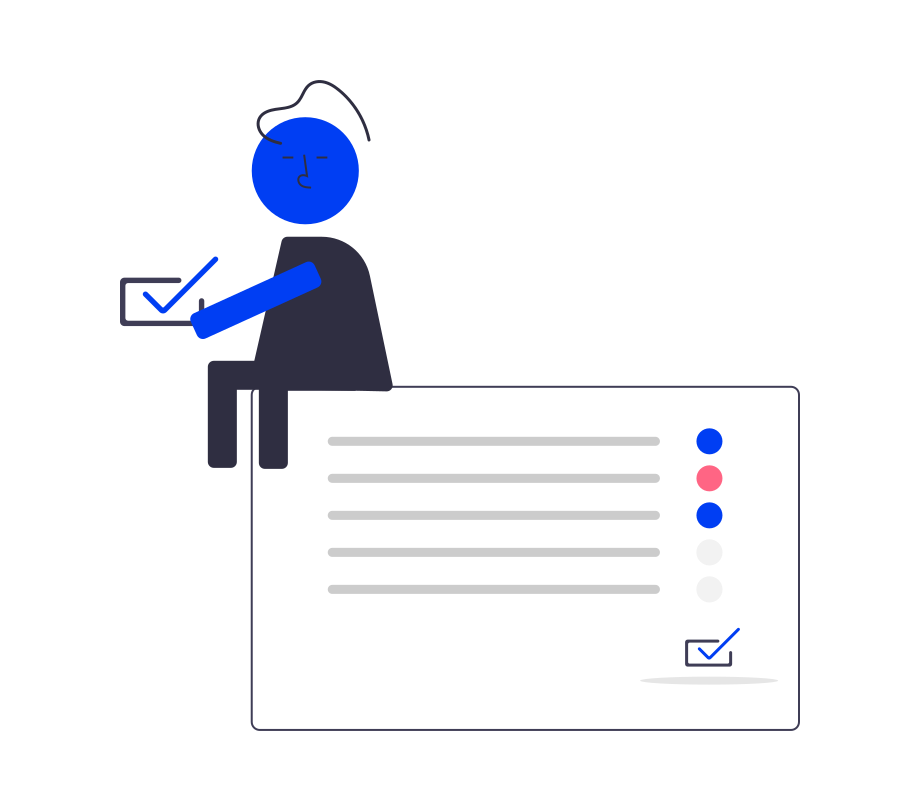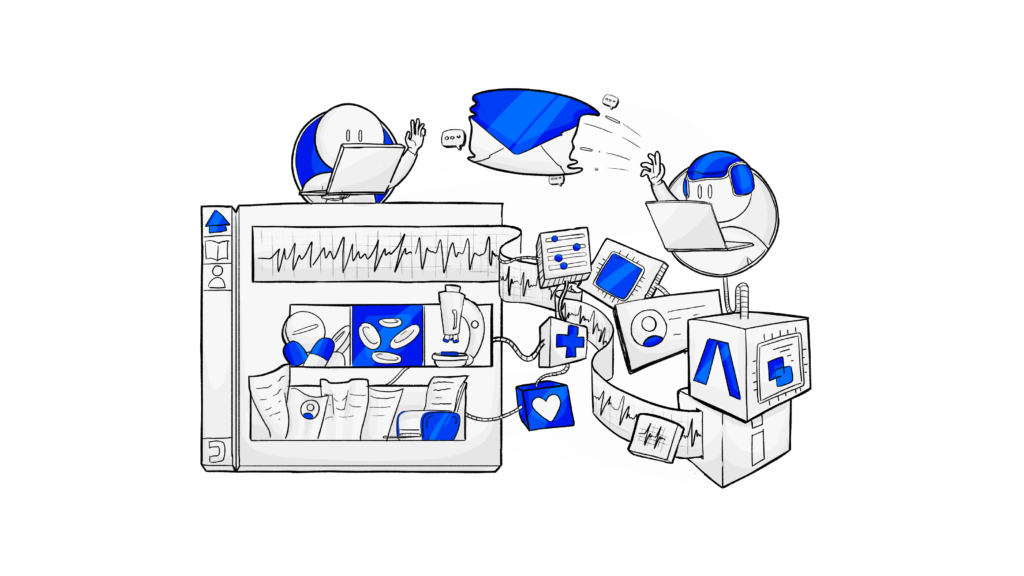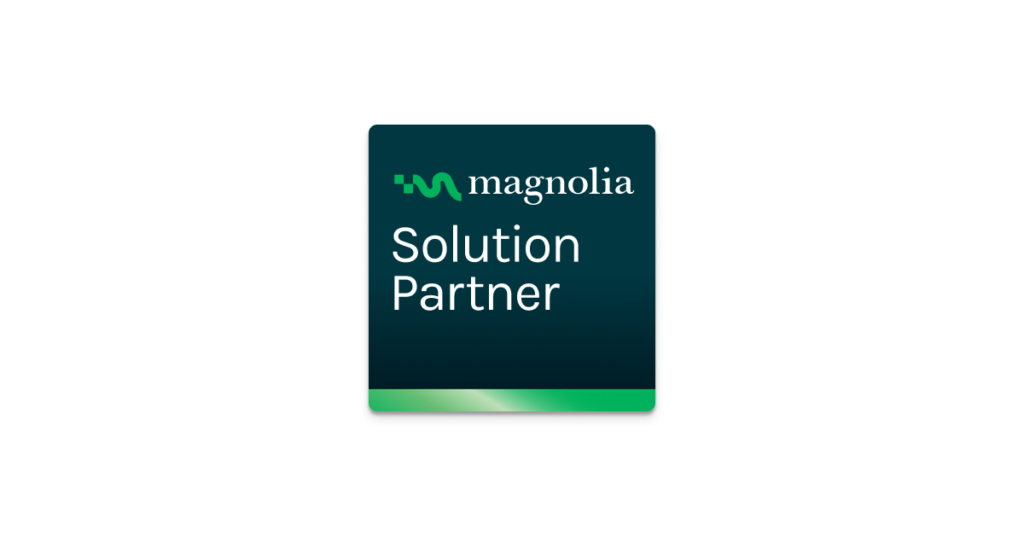1. The role of pharma patient portals in improving adherence
Patient portals offer a promising solution to the problem of medical non-adherence. These secure online platforms provide patients with a central hub to manage their medications, access educational resources, and communicate directly with their healthcare providers.
Patient portals can significantly improve medication adherence by empowering patients and fostering better communication. Here’s how these portals can play a role:
- Education and information — patients are provided with clear and accessible information about their medications, including their purpose, side effects, and proper administration. This can empower patients and make them feel more in control of their treatment, potentially increasing adherence.
- Reminders and refillable options — portals can send automated reminders to patients to take their medications or refill prescriptions when needed. This can be a lifesaver for those who are forgetful or struggle with managing refills.
- Communication and support — secure messaging features allow patients to connect with healthcare professionals or pharmacists. This can address concerns, answer questions, and provide ongoing support, potentially reducing the feeling of being alone with a condition and improving adherence.
- Tracking and self-management tools — this data can be shared with a health care provider, facilitating informed treatment adjustments and potentially motivating patients to stay on track.
However, pharma patient portals are only one piece of the puzzle. They should be used in conjunction with other strategies to improve medication adherence for the best impact.

2. Medication management tools
Effective medication management is a cornerstone of medical adherence, making sure that patients take their medications correctly and consistently. Patient portals with advanced medication management tools can significantly enhance adherence by providing features that streamline and simplify the process.
2.1 Medication schedules and reminders
Medication schedules and reminders are essential features for pharma patient portals aimed at increasing medication adherence. These tools help patients manage their medication regimens effectively, ensuring they take them as prescribed.
- Personalized dosing schedules
- Customization — personalized dosing schedules tailored to each patient’s prescription details, including the type of medication, dosage, frequency, and specific timing.
- Dynamic updates — flexibility to update schedules based on changes in the prescription or patient’s health condition, ensuring that the schedule remains accurate and relevant.
- Visual and interactive calendars
- Daily, weekly, and monthly views — interactive calendars displaying medication schedules in various views, allowing patients to see their medication regimen at a glance.
- Color-coded entries — use color-coding to differentiate between medications, making it easier for users to identify which medication to take and when.
- Comprehensive personalized information
- Detailed instructions — include detailed instructions for each medication, such as whether to take it with food, potential side effects, and specific storage requirements.
- Supplementary information — provide access to additional resources and educational materials about the medication to ensure that patients understand their treatment plan.
- Adherence tracking
- Logging doses — allow users to log when they take their medication, helping them keep track of their adherence and providing a sense of accomplishment.
- Missed dose alerts — include alerts to notify patients if they have missed a dose, along with guidance on what to do next, such as wether to take the missed dose immediately or wait until the next scheduled time.
- Automated notifications
- Multi-channel reminders — reminders sent through various channels such as SMS, email, push notifications on mobile apps, or even automated phone calls, depending on patient preference.
- Customizable alerts — patients can customize the timing and frequency of reminders, choosing how far in advance they want to be reminded of an upcoming dose.
- Snooze and reschedule options
- Snooze functionality — allow patients to temporarily delay a reminder if they are unable to take their medication at the scheduled time, with the option to receive a follow-up reminder.
- Reschedule capabilities — patients can easily reschedule reminders if there are changes in their daily routine or if they need to adjust the timing of their medication.
These kinds of features provide structure, support, and convenience to patients, significantly enhancing medication adherence and patient engagement.
2.2 Customization options for patients
While core functionalities are essential, offering customization options within your pharma patient portal can significantly enhance patient engagement and adherence. Here are some examples:
- Schedule flexibility — allow patients to tailor medication reminders to their specific needs (e.g., setting multiple reminders, choosing preferred notification methods, customizing the message, etc. )
- Dosage tracking — provide options for patients to track their medication intake (e.g., checkboxes for each dose, logging notes about side effects, integration with wearable devices, etc. )
- Medication grouping — allow patients to group medications together based on their purpose (e.g. morning medication, bedtime medication, etc.)
- Education material preferences — give patients the option to choose their preferred format or educational resources on medications (e.g., text-based, interactive, videos, etc. )
Incorporating these customization options into your patient portal can improve user experience, leading to higher engagement and improved overall health outcomes.
2.3 Dosage information and instructions
Providing clear and accessible dosage information and instructions is crucial for administering medications correctly. Misunderstandings or confusion about dosage can lead to non-adherence, which can negatively impact treatment outcomes.
Patient portals can play a significant role in addressing this issue by offering detailed, tailored, and easily understandable dosage information and instructions.
- Simple and user-friendly format — present dosage information in a way that is easy to understand, even for patients with limited medical knowledge.
- Visual aids — use visual aids such as icons or short videos to illustrate dosage instructions, particularly for complex medications or those requiring specific administration methods.
- Multiple languages — for a broader reach, consider offering dosage information and instructions in multiple languages to accomodate diverse patient populations.
- Search functionality — allow users to easily search for specific information about their medications within the portal. This eliminates the need to scroll through long lists and ensures quick access to the necessary information.
By prioritizing clarity and accessibility in presenting dosage information and instructions, pharma patient portals empower patients to take their medications confidently and correctly, leading to better adherence and overall health outcomes.

3. Personalized education and support
Pharma companies can empower patients to actively manage their health by tailoring educational resources and support services to their individual needs and preferences.
3.1 Tailored educational content
Provide personalized educational resources catering to each patient’s conditions and treatments. This could include:
- Leverage patient data
- Diagnosis and medications — you can use information about a patient’s diagnosis and prescribed medications to curate educational content specifically relevant to their condition and treatment plan. This can include:
- Detailed explanations of the patient’s specific conditions and their causes.
- In-depth information on their medications, including mechanism of action, proper usage, and potential side effects.
- Personalized information that addresses common concerns or challenges associated with their specific condition or medication.
- Lifestyle factors — consider incorporating data on a patient’s lifestyle habits (with consent) to tailor education further. For instance, patients with diabetes might benefit from content on healthy eating habits or managing blood sugar levels through exercise.
- Diagnosis and medications — you can use information about a patient’s diagnosis and prescribed medications to curate educational content specifically relevant to their condition and treatment plan. This can include:
- Content delivery in different formats
- Cater to learning preferences — you can offer a variety of educational content formats to cater to different learning styles. This can include:
- Short, engaging videos that explain complex medical topics in a clear and concise way.
- Easy-to-read articles with clear visuals like infographics or illustrations.
- Interactive elements like quizzes or assessments to test understanding and identify knowledge gaps.
- Accessibility features — make sure that your content is accessible to all patients.
- Offer content in multiple languages to accommodate diverse patient populations.
- Provide text-to-speech options for visually impaired users.
- Use closed captioning for videos to ensure accessibility for deaf or hard-of-hearing patients.
- Cater to learning preferences — you can offer a variety of educational content formats to cater to different learning styles. This can include:
- Dynamic content management
- Tailored content delivery —you can implement a content management system that can dynamically adjust the educational materials presented to a patient based on their progress or adherence challenges. For example:
- If a patient consistently misses their evening medication, the portal may highlight the importance of nighttime doses and provide strategies for improved adherence at that specific time.
- If a patient struggles with remembering side effects, they might be automatically directed towards quick reference guides or infographics on their medication’s side effects.
- Tailored content delivery —you can implement a content management system that can dynamically adjust the educational materials presented to a patient based on their progress or adherence challenges. For example:
3.2 Interactive learning tools
Develop a library of educational materials that cater to different learning styles and preferences, such as:
| Interactive quizzes and assessments | Gamification elements | Case studies and patient stories | Interactive video content |
| Knowledge checks Develop short, interactive quizzes that test patients’ understanding of their condition, medication, and treatment plan. | Badges and rewards Implement a reward system where patients earn badges or points for completing educational modules and quizzes or consistently adhering to their medication schedule. | Real-world examples Share real-world case studies or patient stories that showcase the positive effects of medication adherence on a similar condition. | Hotspots and overlays Integrate hotspots or clickable overlays within educational videos that provide patients with additional information on specific topics. |
| Personalized feedback Provide immediate feedback after each quiz, highlighting areas of strength and knowledge gaps. | Leaderboards Consider incorporating optional leaderboards to foster a sense of friendly competition and encourage patients to stay engaged with the learning tools. | Interactive storytelling Utilize branching narratives where patients can make choices and see the consequences related to medication adherence. | Interactive animations Utilize interactive animations to explain complex medical concepts in a visually engaging way. |
| Adaptive learning Leverage the quiz results to tailor future educational content based on the patient’s individual needs. | Interactive activities Develop interactive activities like simulations or role-playing scenarios that allow patients to apply their knowledge practically. | Discussion forums Consider incorporating moderated discussion forums where patients can share their experiences, ask questions, and support each other. | 360° videos Consider incorporating 360° videos that allow patients to virtually experience aspects of their treatment plan, such as proper administration techniques. |
Interactive learning tools can create a more engaging and effective learning experience for patients, which also fosters a sense of ownership and empowerment.
3.3 Chatbots or virtual assistants for Q&A
You can integrate chatbots or virtual assistants that provide patients with immediate answers to frequently asked questions about their medications and treatments. This offers 24/7 support and empowers patients to find information independently.

4. Progress tracking and gamification
Medication adherence can often feel like a daily chore. Pharma patient portals can breathe new life into treatment plans by incorporating progress tracking and gamification elements. These features turn routine health management tasks into more engaging and rewarding experiences.
4.1 Data-driven insights for patients and providers
Data-driven insights play a crucial role in enhancing the effectiveness of pharma patient portals for both patients and healthcare providers. By leveraging data analytics, these portals can provide actionable insights that help improve medication adherence, optimize treatment plans, and enhance overall patient outcomes.
| Patient-centric insights | Provider-centric insights |
| Personalized medication education Analyze adherence data to identify areas where patients might need additional education. The portal can then deliver targeted content (video, articles, quizzes) to address specific medication concerns or knowledge gaps. | Patient population management Analyze adherence data across patient groups to identify trends and potential risk factors for non-adherence. This can inform targeted interventions for specific patient populations. |
| Adherence trend identification Track medication adherence patterns over time. If a decline is detected, the portal can prompt patients with reminders, offer motivational messages, or suggest they contact their healthcare provider. | Remote medication monitoring Gain real-time insights into medication adherence, allowing providers to address adherence issues and tailor treatment plans accordingly and proactively. |
| Potential side effect monitoring Analyze data to identify potential side effects based on reported symptoms and medication usage. This can prompt patients to contact their provider or offer resources on managing potential side effects. | Identification of high-risk patients Data analysis can help identify patients at higher risk of non-adherence due to factors like complex medication regimens or polypharmacy (taking multiple medications). This allows providers to prioritize interventions for these patients. |
| Progress reports and goal-setting Generate personalized reports that visualize medication adherence progress and allow patients to set realistic, data-driven goals for improvement. | Improved communication and collaboration Insights from the portal can facilitate communication between patients and providers. Healthcare providers can use data to tailor discussions during consultations and address specific adherence challenges. |
By harnessing the power of data analytics, pharma patient portals can evolve into valuable tools for both patients and healthcare providers. Data-driven insights can empower patients, enhance communication, and ultimately improve medication adherence and healthcare outcomes.
3.2 Goal setting and rewards
Progress tracking features allow patients to log their achievements and monitor their journey in real-time. Visual dashboards provide clear representations of their progress through charts, making it easy to see how far they’ve come.
Incentivizing these efforts with a rewards system can further motivate patients. Implementing a points system for achieving goals and virtual badges for milestones adds an element of gamification. Tangible rewards, such as discounts on health-related products or services, can also be effective incentives.
3.3 Educational challenges and quizzes
Pharma patient portals can transform dry educational materials into engaging experiences. This approach tests a patient’s knowledge about their condition and medications and fosters a sense of competition and accomplishment, making learning more fun and interactive.
5. Secure communication with healthcare providers
Secure communication between patients and healthcare providers fosters trust and improves patient outcomes. Patient portals can facilitate this through encrypted messaging systems that ensure privacy and confidentiality.
This should be a safe place where patients can ask questions, share concerns, and seek advice without traditional communication barriers.
Real-time messaging can provide quick responses to inquiries about medications, treatment plans, or side effects, empowering patients to make informed decisions about their health.
Secure communication features can also include options for sending documents, such as lab results or referral forms, directly through the portal. This streamlines the process and ensures that sensitive information is transmitted securely.
Regular updates and notifications can keep patients informed about their health status and upcoming appointments, enhancing engagement and compliance. Patient portals can strengthen the patient-provider relationship by offering a secure, user-friendly communication channel, ultimately leading to improved health outcomes and increased patient satisfaction.
6. Benefits of implementing these features
By equipping pharma patient portals with the features discussed above, you unlock a powerful suite of tools that benefit both patients and pharmaceutical companies.
For patients:
- Enhanced medication adherence
- Patients will find it easier to stay on track with their medication regimen.
- Personalized information improves medication understanding and addresses specific concerns.
- Gamified elements can make learning about prescriptions engaging and effective, motivate patients, and encourage better adherence habits.
- Improved health outcomes
- Effective medication management practices lead to better treatment efficacy, reduced complications, and, ultimately, improved overall health.
- Empowerment and ownership
- Data-driven insights and secure communication tools enable patients to take a more active role in managing their health.
For pharma companies:
- Increased brand loyalty — by creating a patient-centric experience that fosters adherence and improves health outcomes, pharma companies can build stronger brand loyalty.
- Reduced healthcare costs — improved medicational adherence translates to fewer hospital visits and complications, leading to reduced healthcare costs for both patients and payers.
- Valuable data collection — data from medication trackers, adherence patterns, and patient interactions within the portal provides valuable insights into medication usage, adherence challenges, and patient needs. This data can be used to develop more effective medications and targeted interventions.
- Improved patient engagement — secure communication features, personalized educational content, and interactive learning tools increase patient engagement with their treatment plan and the brand.
Implementing these features creates a win-win situation for everyone involved. This comprehensive approach positions pharma companies as leaders in patient-centric care and contributes to a more efficient and effective healthcare system overall.
7. Conclusion
The future of patient care is one where patients are empowered to take an active role in managing their health, and pharmaceutical companies can play a vital role in supporting them. By embracing technology and prioritizing patient-centricity, pharma patient portals have the potential to revolutionize medication management and contribute to a healthier future.







